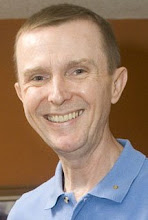Think of the opening of your family history video as the overture to your program. An effective opening can create a mood, establish a visual style and set the stage for your entire program. Do the job well and you'll rivet your audience's attention to the television screen.
You can have a lot of fun creating your opening. Look at it as an opportunity to let your creativity soar. An opening gives you the opportunity to pull together various elements from throughout your video and combine them in interesting ways. It also gives you the chance to use visuals or interview segments that might not fit in the body of the video.
Here's what I mean. At one point during an interview with my grandmother, I asked her if she ever thought she'd be the head of such a large family. She paused, then asked me if I knew how many family members we had. "No," I answered. She then looked off into space and quietly said, "We have a lot." It was an amusing exchange and offered a wonderful glimpse into Gram's personality - but it just didn't fit anywhere in the main part of the program. So, I put it right up front. The show opens with that brief exchange. Then my grandmother's image freezes, music begins, and we see a series of stills from throughout her life that culminate in the show's title. Music ends, we fade to black, and then fade up on the first segment.
Opening sequences can be simple or complex. The route you take depends on your creativity, editing expertise, available visual and audio resources and, of course, the time you have to devote to it. Here are some (but certainly not all) of the elements you can use:
Music. A great way to establish mood. Try starting your music (just a few notes is usually fine) before showing the first visual. It's a great way to alert your audience that the show (or segment) is beginning.
Text. A quote from a diary or letter can be an effective way to set the stage for what is to come. You can also create a short preamble that sets up your story, a technique George Lucas used in his Star Wars movies.
Interviews. A short "sound bite" from an interview (as described above) can be used to good effect.
Photos. A brief photo montage set to music can clue the audience in to the people and places the program will feature.
Animation. If you are advanced enough using your editing software and a program like Photoshop, you can "cut out" people and elements from photos and move them in and out of frame while layering them against an interesting background like a map, a slow pan of the old family homestead or a series of shots of the subject's country of origin.
Start thinking about your "opening overture" now. It's the key to a truly successful video. Not only will you have a great time creating it, but I'm sure you'll earn "boffo" reviews from your audience.
